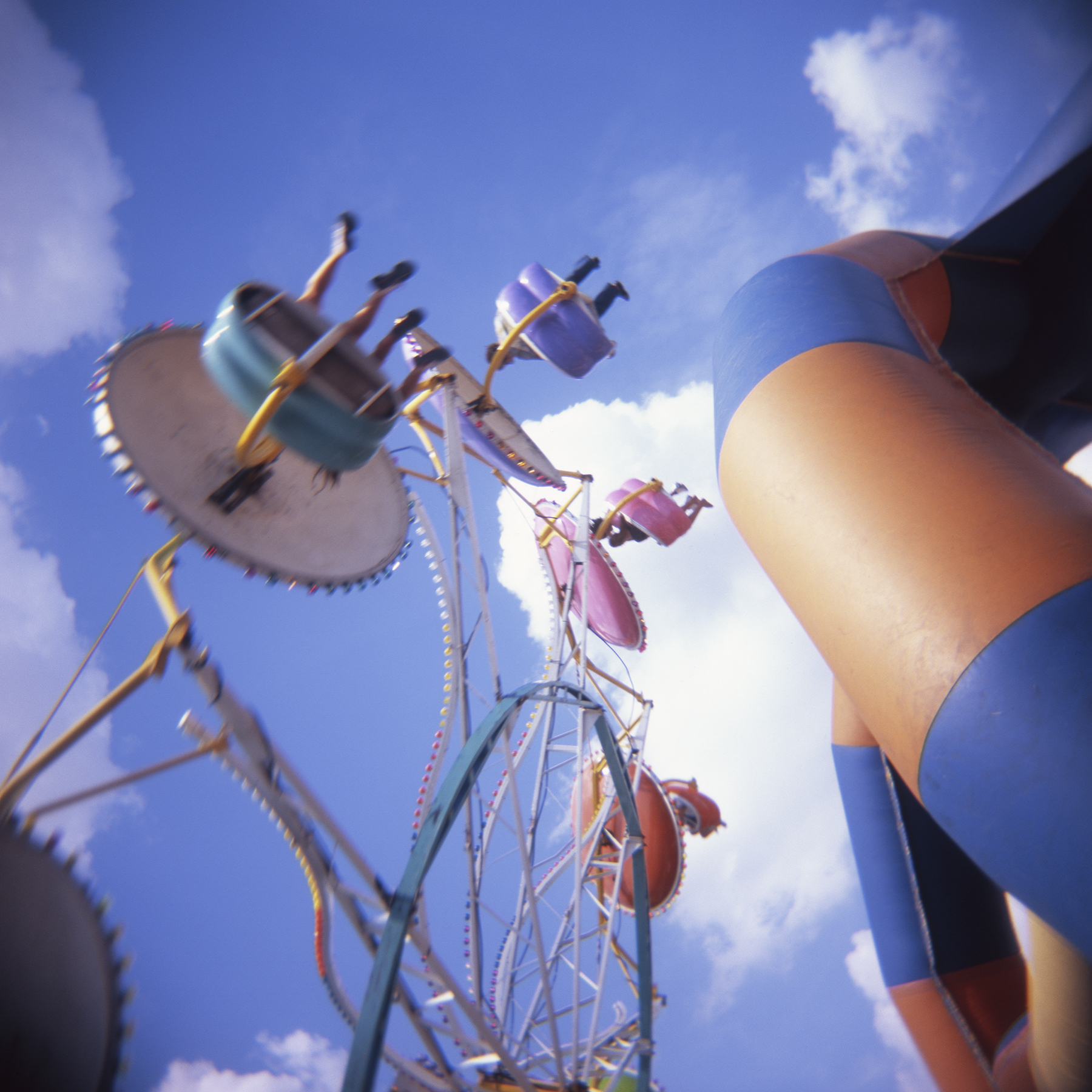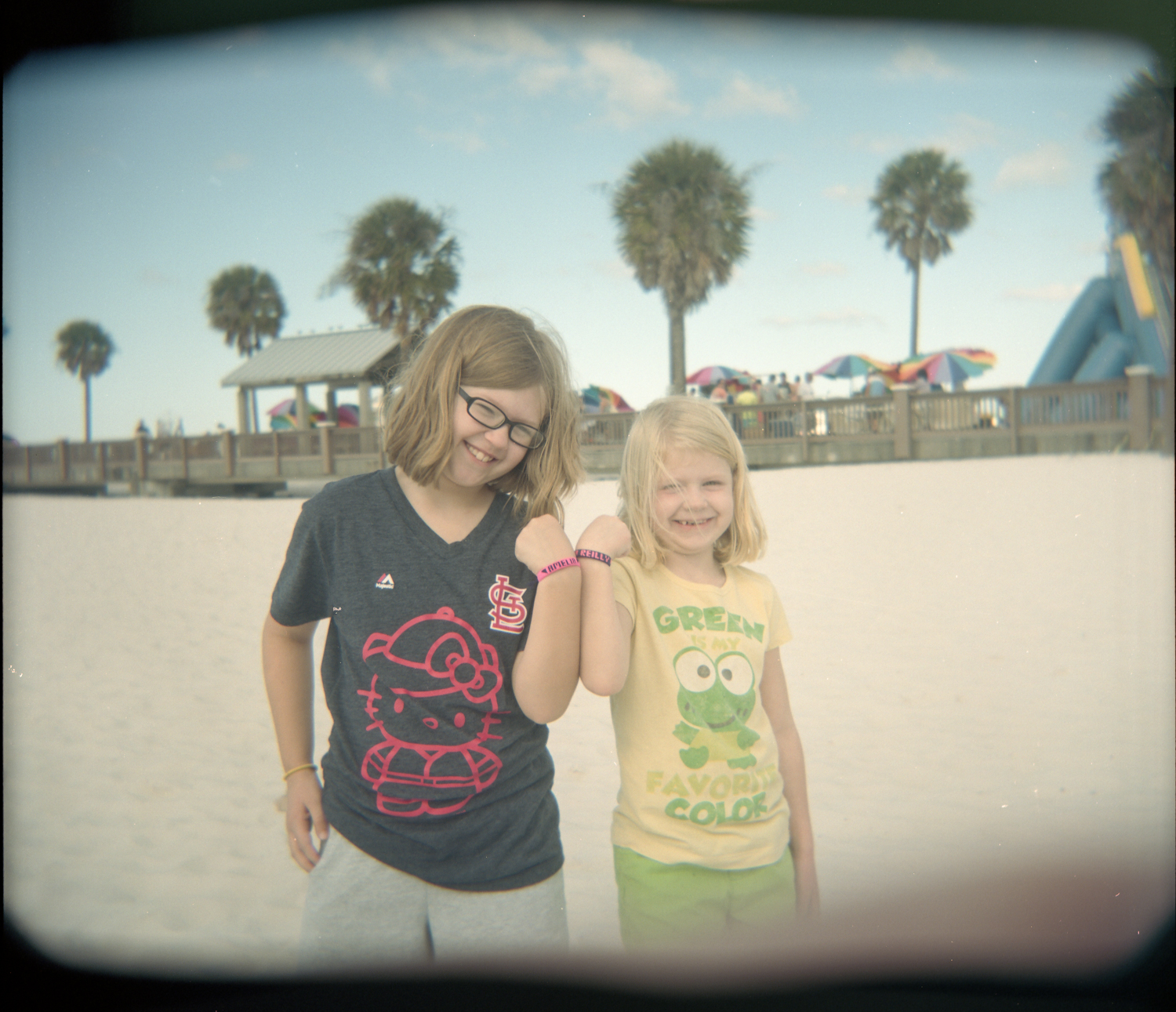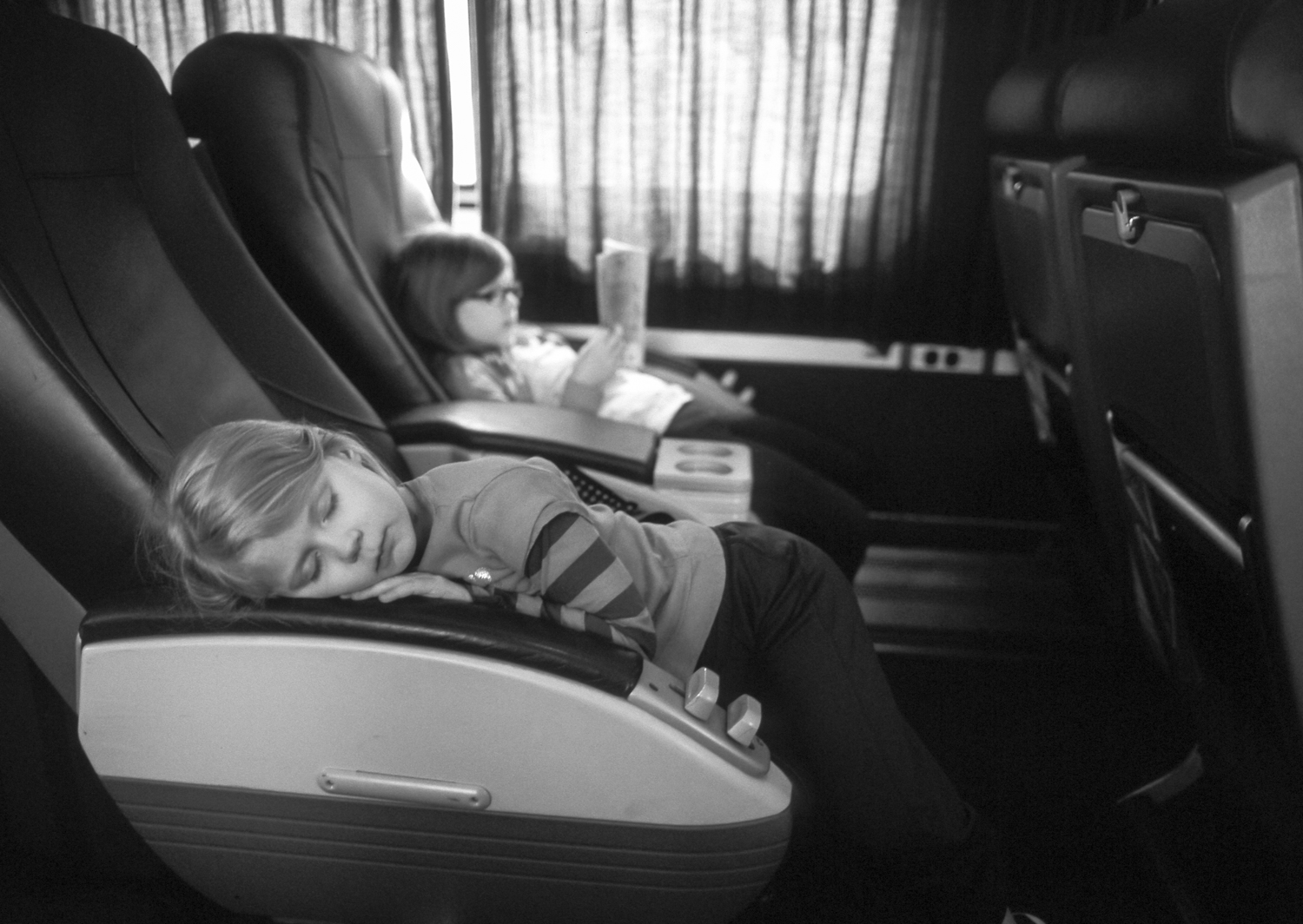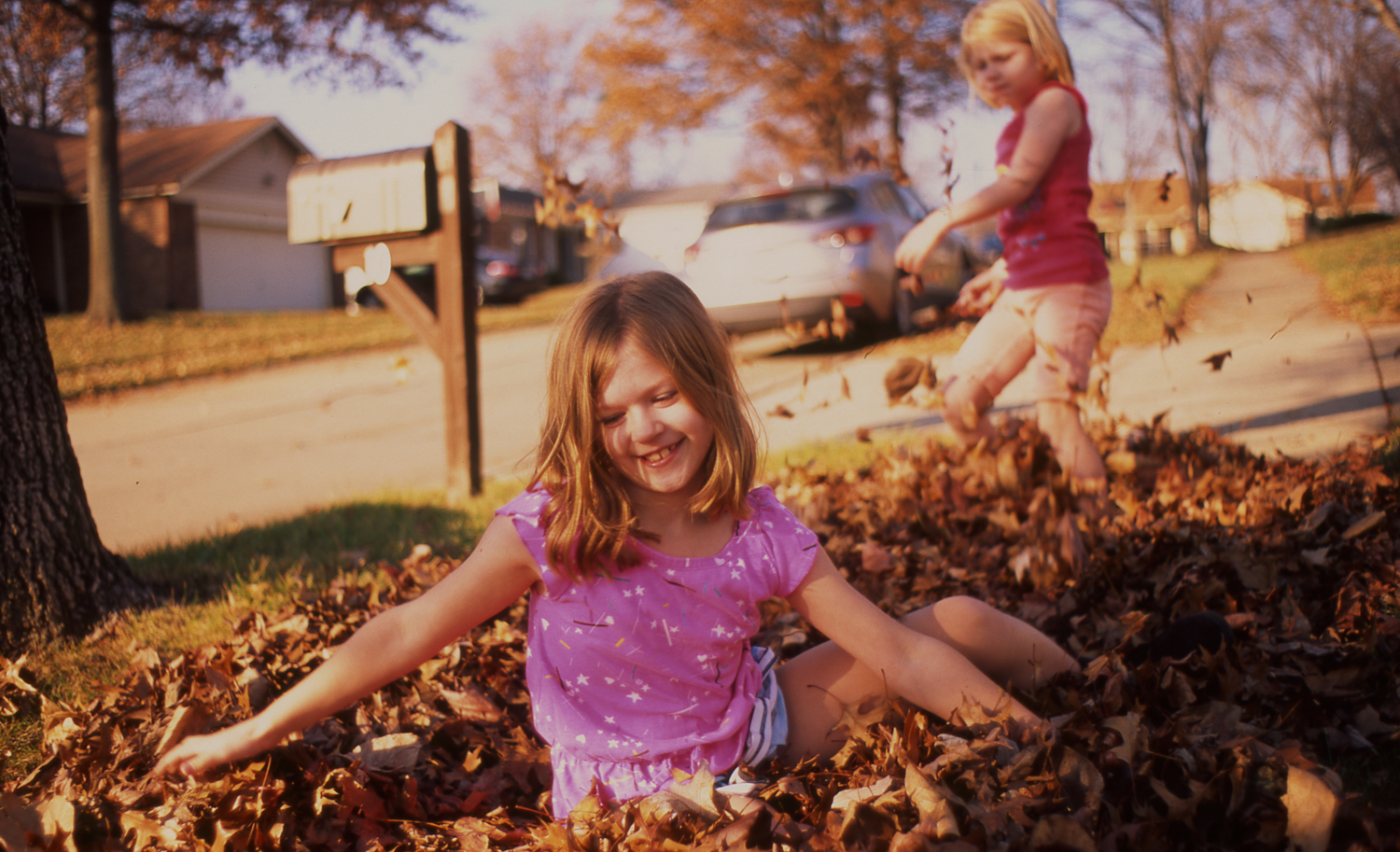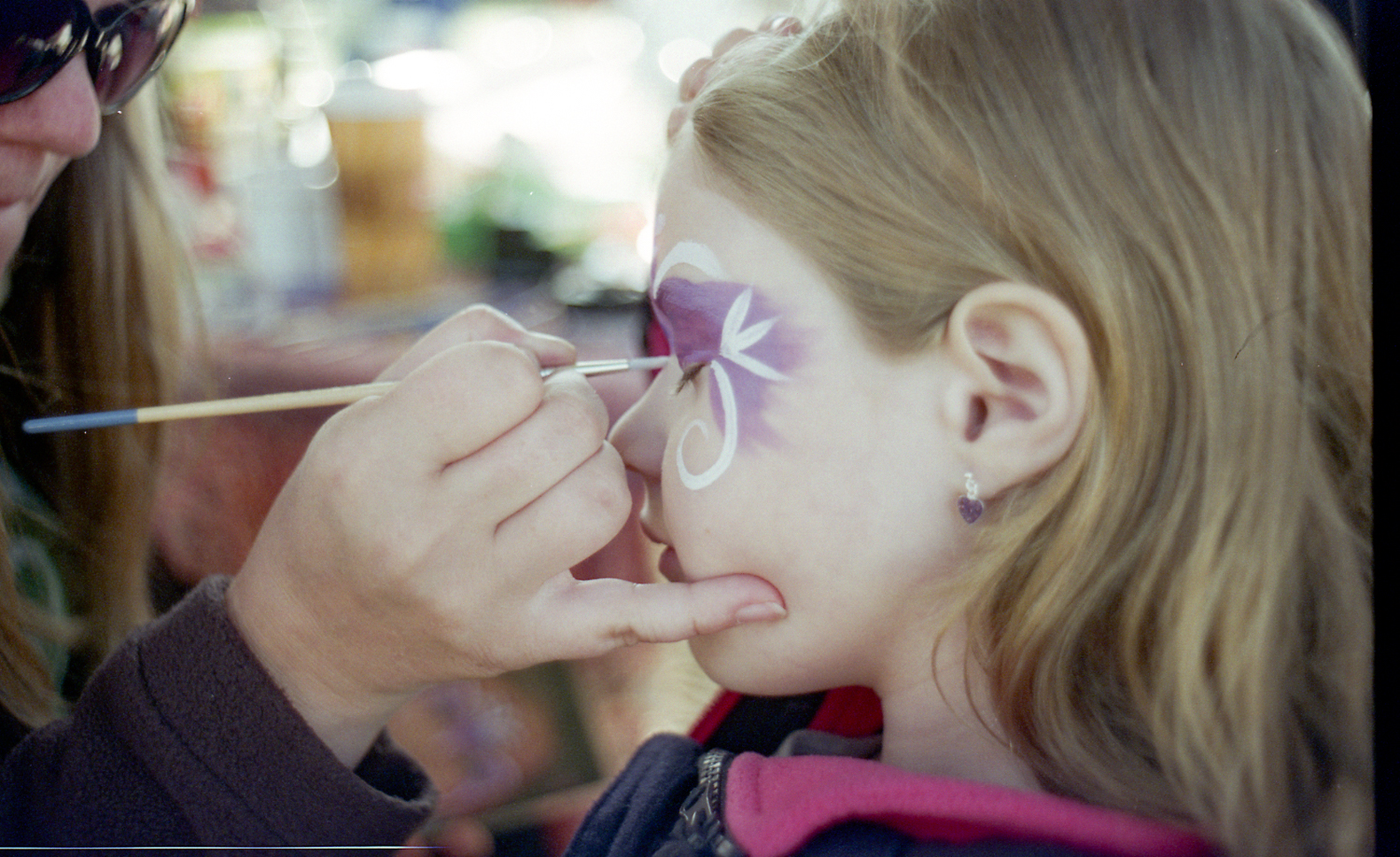A few weeks ago, a series of unfortunate decisions ended with my camera bag - stuffed with gear - in my unlocked car, not in the garage, overnight. I’ve been kicking myself for weeks after discovering the empty space where the bag last was, along with a few other inconsequential items missing from my car the next morning. My first time being robbed.
The empty, butterflies-in-my-stomach feeling of despair is still palpable. I called the police and as I waited for her to arrive, I took out my phone and started typing up an inventory of what had been stolen. It was difficult to remember everything, especially while still in shock that my beloved Mamiya 645 Pro was gone. When the officer arrived, we went over everything, including the fact that I had physically touched every handle and part of the car that would had been useful for fingerprinting. When she asked me to tell her what was stolen, I began to read my list. She was writing them down on one of those little flip-up notepads that fit in her breast pocket, just like a cop show on TV. I wanted to be specific, as I knew these items were going into my official police report, but when I heard myself say “Zeiss Jena Flektogon 20mm f4 zebra...m42 mount,” we both paused and looked at each other, and then back at the notepad, and then I think I said, “ehhh...20mm lens.” The rest of the list got shorter and simpler as we went, and I wondered if any of it mattered anyway. After we were finished, I rushed off to work and got a speeding ticket on the way. What a bad morning!
To hit the highlights of the theft: Canon 7D with grip and various lenses; Mamiya 645 Pro TL with metered prism finder and lenses, my dad’s old EOS 650 and some neat old M42 lenses…along with a myriad of accessories of all sorts. And my Holga! Damn.
Although especially bummed about losing two pseudo-rare lenses for the Mamiya (80mm 1.9 and 35mm 3.5), I was most bothered by the loss of 2 rolls of undeveloped film (my first-ever roll of Delta 3200) and my beloved camera strap, the now-discontinued Luma Loop 1 with two quick releases. Losing my dad’s camera stung a little, but I still have his favorite camera, a Konica Autoreflex TC, in my basement.
Anyway, at the time of the police report, I estimated the total value for everything stolen to be about $2,500.
Those of you who have your act together and have insured your gear are way ahead of me here, but as hobby photographer who has slowly accumulated way too much “camera stuff” as my kids often call it, I was relieved to learn that my homeowner’s policy covered the theft. I spoke to my agent over the phone, who seemed to discourage me from filing a claim. She let me know how much my premium would go up, and hinted that it might be better to save the claim for a bigger loss, like a tree falling on the house, etc. We have a $1,000 deductible, so for a $2,500 loss of camera gear, after depreciation, I might be lucky to get $1,000. She had a point. She advised me that if I do decide to file a claim, to first make an inventory of everything lost, including as many receipts as possible or proof of ownership, prior to calling in the claim. I told her I’d make a list, think about it, and get back to her.
So, I started looking for proof of ownership of everything. The police also wanted me to give them any serial numbers of anything I had, in case they popped up at a pawn shop. So to the basement I went...I found 3 original boxes, which have the serial numbers on them, and was hoping to find a receipt or two. Nope. Not one. What can I say, I’m disorganized.
Standing in my basement, holding an empty box for a Mamiya Sekor 150mm f4 lens, I had the why-didn’t-I-think-of-that-sooner moment...email receipts! As someone with over 4,000 messages in my “deleted emails” folder, surely there was a myriad of receipts within. Searching through them, sorting for “Ebay,” it occurred to me to just log into Ebay instead, and look at my history. Duh! Sad to discover that Ebay does not keep history beyond three years, I checked my PayPal account instead. Bingo!
I was relieved to discover receipts for damn near everything lost in my PayPal history, and also my Amazon.com history. A few items had been purchased locally...one of my local camera shops was very helpful and easily reprinted 3 receipts from my customer history there….the other local camera shop was not as helpful, and I had to get spiny with them to produce the 7D receipt, which eventually they did, making sure I knew it was an inconvenience. Looking through my PayPal and Amazon history also helped me recall every little thing that was in the bag - m42 adapters, mini tripod, spare back, cable release, filters…at the time I filed the police report, I could barely remember half of the items that were actually in the bag, and they all add up quickly.
After spending the better part of a day combing through it all, diligent to not to miss anything, I combined the receipts into one PDF, with a spreadsheet cover page listing every item with purchase dates and costs. Adding it all up, the total was not $2,500, but $5,600. A pretty big difference. And all in one bag! I felt incredibly negligent and naive for leaving one highly valuable bag so vulnerable to theft. By the way it was a Tenba Shootout Backpack 32L. $300 from the friendly local shop.
Once I saw that much higher total, and after spending so much time gathering the info, I was far more focused in filing a thorough insurance claim than I was in finding my stolen gear. Yes, it made me angry being a victim at my own house, a “safe” suburban neighborhood. Yes, it bothered me knowing that some kid or meth tweeker will trade or sell my stuff for next to nothing. Yes, I looked on craigslist every day for a week after the theft, including craigslist in other nearby cities, hoping to see one item of mine for sale. But shifting gears towards getting my inventory complete to file an accurate claim was far more productive and totally within my control. I cannot stress this enough - how much better I felt after leaving the crime-solving to the police and just focusing on what I could do to make my situation better. Knowing that after depreciation and the deductible, I could possibly be compensated in the ballpark of $3000-ish, that felt positive.
Funny thing is, I had been considering putting it all on eBay at one point, and replacing it with something different, but I was sure I missed my window to get more than $500 for the 7D, and what a pain to post/sell/ship all that stuff. But if the insurance company was fair, I though, hey - I’ll start over with a clean camera slate, maybe a rangefinder, or a Bessaflex. Something bigger like a 690 or a 67, or maybe even a Graflex. Ebay will be my oyster!
I called in the claim, and my insurance adjuster sounded relieved to hear that I had already completed an inventory. We did a recorded interview and I swore that I wasn’t being fraudulent, and after the call, I emailed her the pdf - I hoped it would make it so easy for her to research each item and assess it’s value. Then I waited, preparing for the worst, and thinking of the movie The Rainmaker, where the insurance company just denies all claims.
A week or so after filing the claim, the estimate arrived. Each item was listed, along with the original cost, the depreciation subtracted, and the current value. My digital gear had depreciated quite a lot, and she really lowballed me with a 3rd party $50 cheapo battery grip to replace my genuine Canon grip, the only item for which I didn’t produce a receipt. However, nearly all of my film equipment showed ZERO depreciation, and in some cases, had appreciated in value by nearly 40%. In total, and accounting for the $1000 deductible, the estimate was $3,600, about 70% of the original value of the loss (also our premium increased by $100/year.) To be honest, it was really an accurate settlement. I’m not suggesting you should leave your gear out overnight on your driveway, but it was definitely easier than selling it all on eBay.
Yesterday the check arrived! I’m researching a waist-level 6x6, a Lomo LC-A 120...I’ve never had a rangefinder...decisions, decisions...
Some takeaways, in no particular order:
-Never leave anything in your car that you value.
-Please don’t victim-blame those that forget #1.
-If you’re a hobby photographer, your gear may be covered under homeowners insurance...or you can add a rider to your policy specifically for your gear.
-If you’re a pro photographer, your gear is likely not covered by homeowners...you should have a separate policy.
-Don’t trust the “walk away lock” on new car models.
-Make an inventory of all your “camera stuff,” including serial numbers. Take a photo inventory also. This will help with older stuff for which you don’t have a receipt.
-If you don’t have a receipt, your insurance company will probably replace your name-brand thing with a knock-off brand thing.
-Evidently digital gear depreciates, and analog gear doesn’t!
-Don’t touch anything once you realize you’re in a crime scene.
-It feels infinitely better to focus on what you can control than to dwell on something you can’t change.
-PayPal and Amazon keep a complete history of your sales and purchases, but Ebay only keeps the last three years...it would not surprise me if Paypal and Amazon eventually follow suit, so make an inventory before it’s too late!
-Actual Cash Value (ACV) insurance pays you the amount it would take to replace your lost item with a new one, minus depreciation. In my case, a new 7D retails for $1,600. ACV would pay me $1,080. That’s it.
-Replacement Cost Value insurance pays you the same as ACV, but you have the option to be reimbursed for the depreciation (if you so choose), provided that you show proof of purchase of the new, agreed-upon item listed in the estimate, within 1 year of filing the claim. So for my old 7D, I could send them a receipt for a new 7D Mark II, and they would send me a check for the depreciation difference, $520. Or, I could just keep the $1,080 they originally sent me, and get whatever I want, like a Bessa R3m with a 50mm f2!
-Check your homeowner’s policy to see if you have ACV or RCV insurance. RCV is better, although I might not utilize mine. :)
CONNECT
Brad Lechner is a lifelong St. Louisan and family man. He makes his living in digital, but on his own he prefers shooting film. What continues to draw him back to analogue is the slower, more deliberate shooting experience. (Although he also appreciatea the limited number of images to review!)
He started shooting when his dad gave him his Konica Autoreflex TC. Occasionally he still uses it, but more often he shoots with a Mamiya 645, Holga, or Canon 650 with older prime lenses. Recently he has been exploring different stocks, including B&W developed as slides, and cinestill reversal. He doesn't yet develop his own film, but it's something he wants to try soon.
He doesn't have a particular style - sometimes he just enjoy snapshots of friends and family, other times he sets out with more purpose to find things of interest.
You can see some of his work at bradlechner.com.

